Let us consider the imported S-curve elm. I know that most “true” bonsai artists hate them. So much so that they don’t even look at them. Too bad for them and good for me.
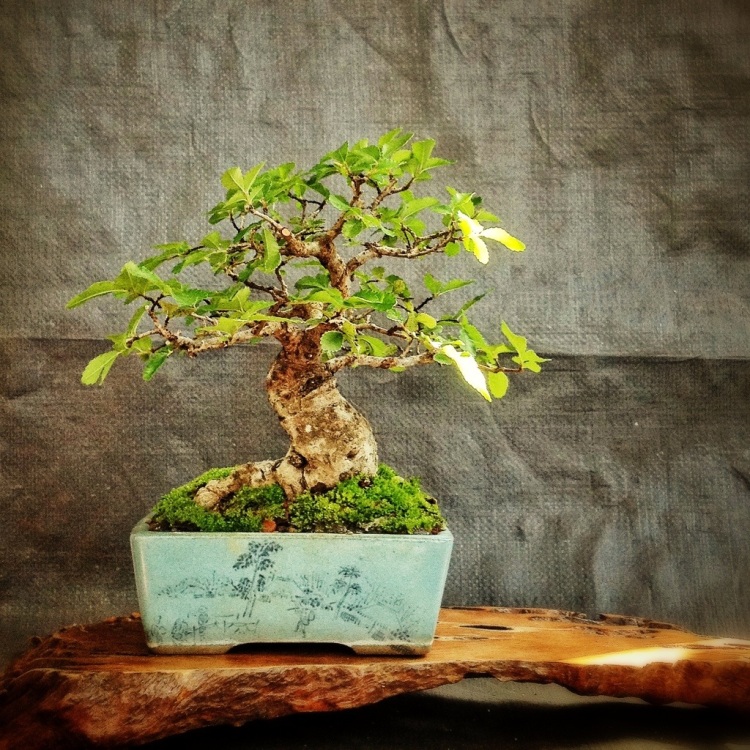
This is one of them. With a little work…..and time.
This is how they usually look

It is possible to style it with the typical “1st branch, 2nd branch” cookie cutter instructions. And it might look good if you keep at it and get the branches ramified and full.
Or you can chop it and make it a bit more tree-ish.
The first step in choosing a tree is always pick one out with a good nebari
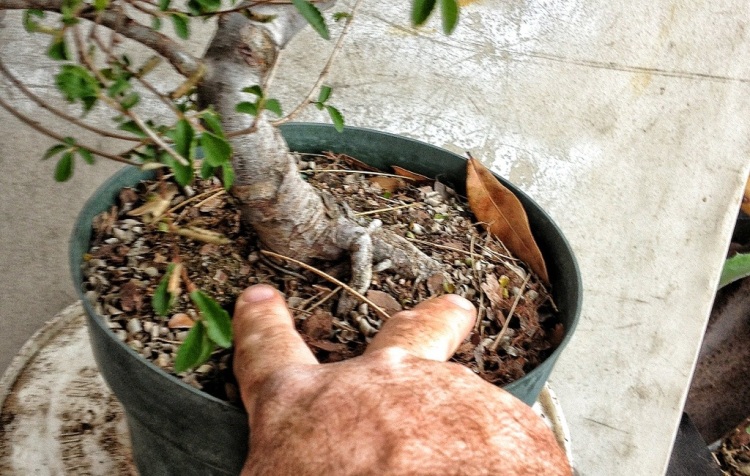
The base (nebari) should have a good flare.
Next

It should have a branch that is somewhat thick and situated low on the trunk.
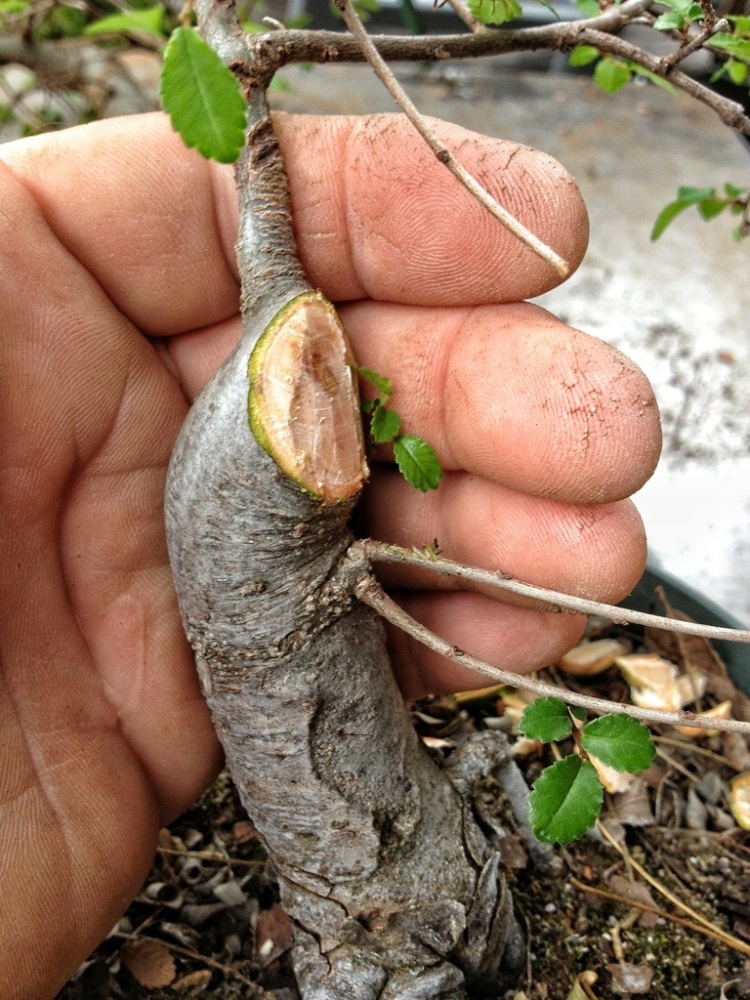
make it flush and cut cleanly (it’s not in this pic but you shave it smooth)

This is the cut paste I use. I think it might be shin-kiyonal.
Staving off the debate on using cut paste, in some instances I use it. In others I don’t. When I do it works as I want it to. Google the use of wound sealers and you could waste an afternoon. That’s all I have to say to that, right now.

Slather it on (one’s day is fulfilled when one is able to use the word “slather” in a sentence ).
I will keep it in this pot (or bump it up to the next one bigger) for this year. The idea is to get some growth and help heal the cut.
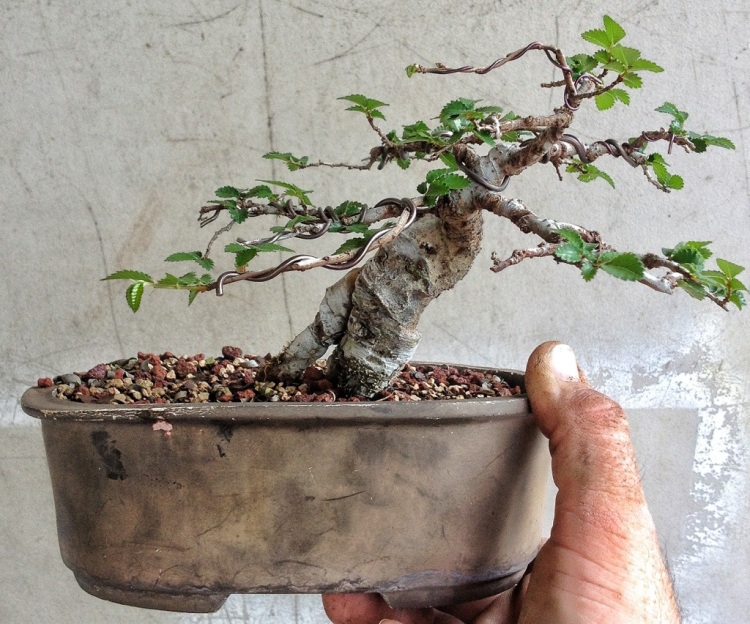
Here is one that I’ve been working on for a few years.

The cut is here.
I’ve left it in this deeper training pot for two years. I thinks it’s ready for a proper pot. Maybe not the finished pot but a ceramic one at least.

Looks better. I’ll have to repot every year now. What keeps the trees healthy is that repotting. If the roots have a place to grow the tree will grow more quickly.
I always tell my students: it is the cutting of roots that allow the trees to live a long time. A pine tree in the ground in your garden may only live 50-100 years but in a bonsai pot the same species may live 200 years. Why? The feeder roots, the only ones that matter, are close to the trunk and don’t have to fight gravity and drought. The annual or semi-annual repotting ensures that these roots are close by and have an easy time nourishing the tree.
Next, lets develop a tree I cut last year.

This one, I’m thinking, needs some movement.

Ready for the growing year. I will need to watch for the wire cutting into the tree. I want it to cut a little (gasp…it can’t be!?) in order for that branch to set. The movement is very subtle and it could just straighten out if I removed it prematurely (there’s a joke there I think)
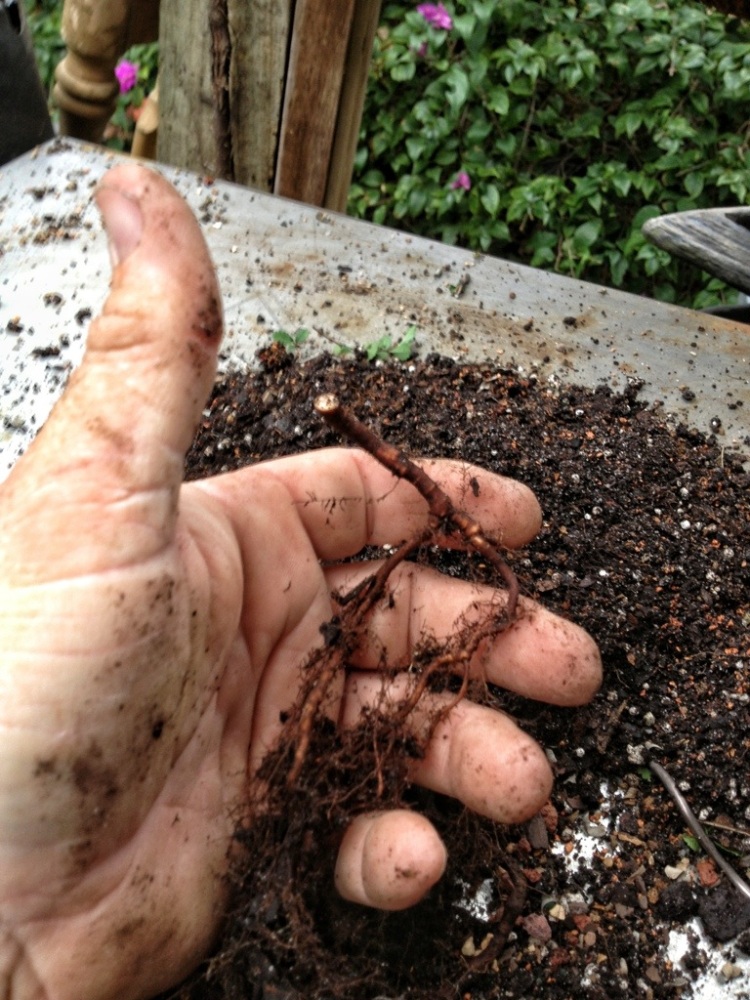
Here’s a tip. Elms do really well as root cuttings. If you find a good size root (the one above is not but it is big enough to be demonstrative)
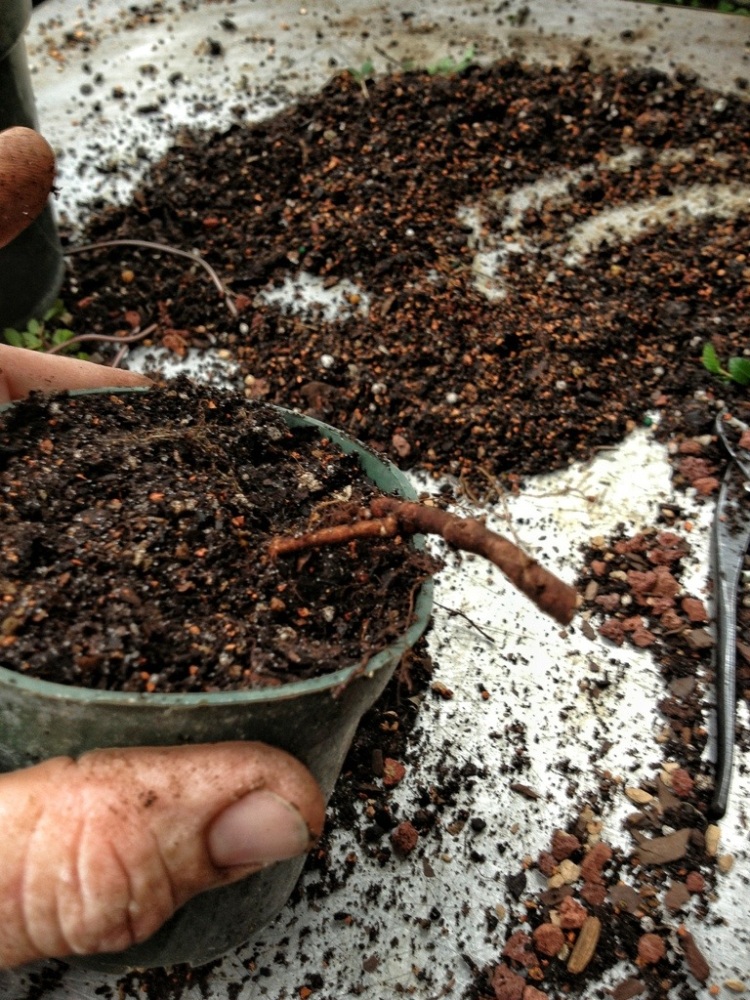
Put it into some soil and let it grow. Neat, huh?
Now, I know that you’re thinking that I only just chop and re grow right?
These next two are examples of what searching for the non-s-curve in the batch of clones.

Here’s the cut I made for taper.
What to look for in these: twists and bends that occur in three dimensions.

Like that. It was bent to the left and forward and up to the right and around.
Now an example of one that’s been in a bonsai pot and has some more development.
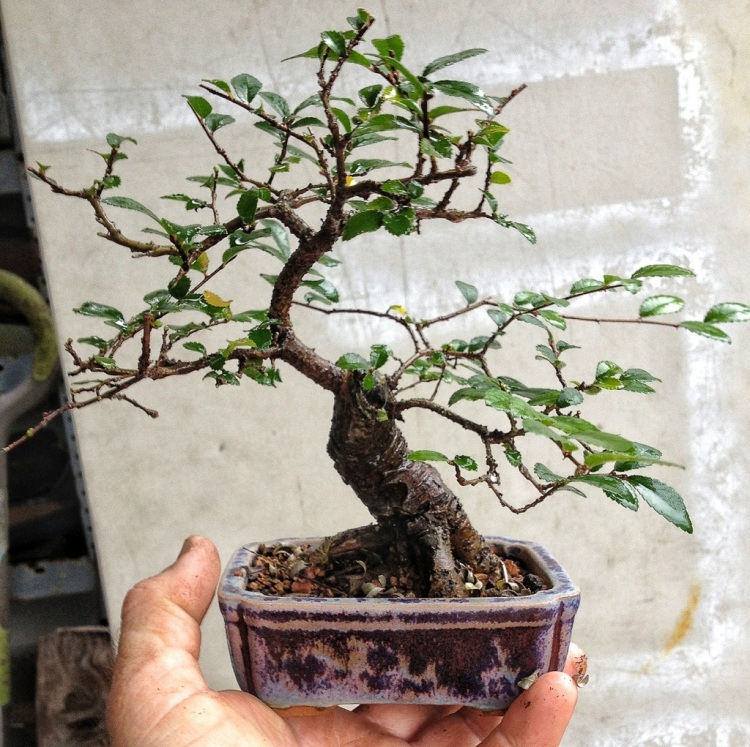
Some maintenance first. Repotting.
Some of you are wincing when you see all those leaves. This is happening in mid January here in Florida. Those are all last years leaves. Sometimes they just don’t fall off. That’s just the nature of a chinese elm. Not lying.

Just a tad root bound. I repot the small ones every year.

I use the same size soil in all of my plants. I had tried using the “shohin” mix that some places sell and found that it held too much water and, therefore, stunted the trees growth ( If the trees roots have to stretch it means better top growth. Usually. Don’t let them dry out too much. )
I use a smaller mix for top dressing (moss doesn’t grow we’ll on the coarse mix I use) to put the soil into scale with the tree, but that’s it.
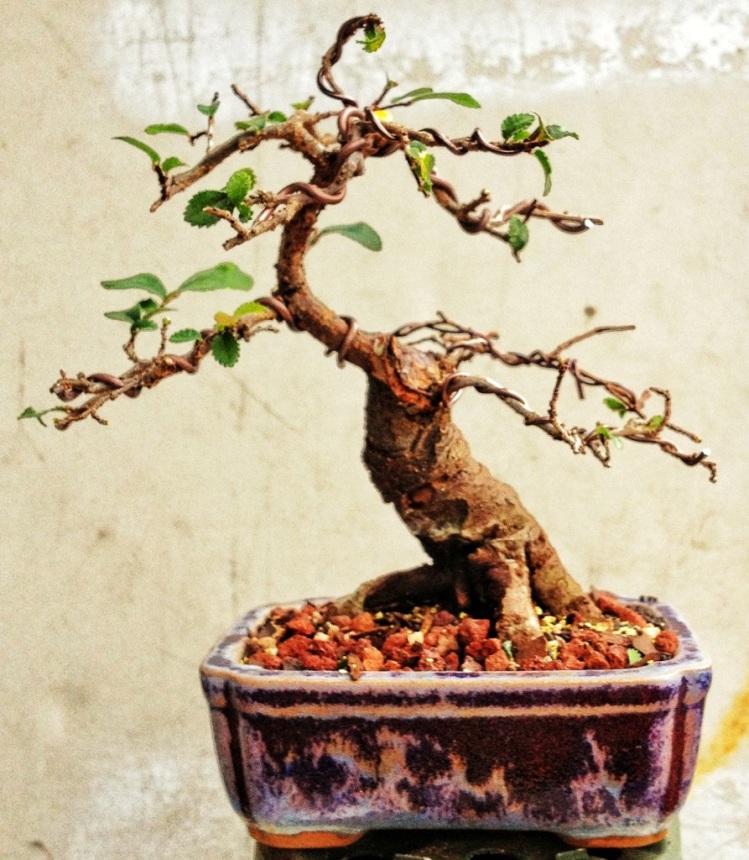
There it is with some wire and some pruning.
The secondary trunk still needs to thicken but that just comes with time.
And lastly, a super short one
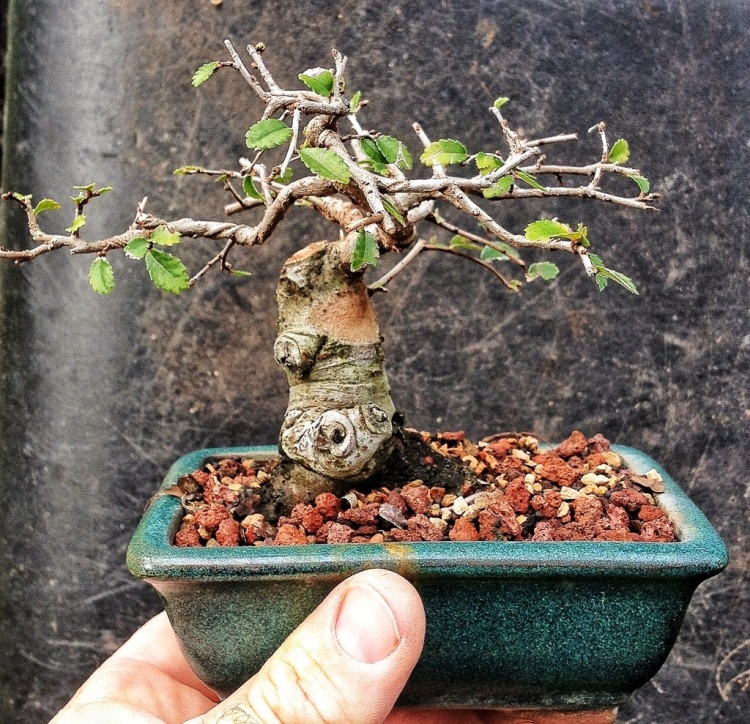
This will be a year without wire in this one. I’m going to go for branch thickening and that’s best done without wire.
Hopefully I’ve shown you that, contrary to the old saying, you can put lipstick on a pig. You just have to do some plastic surgery first.
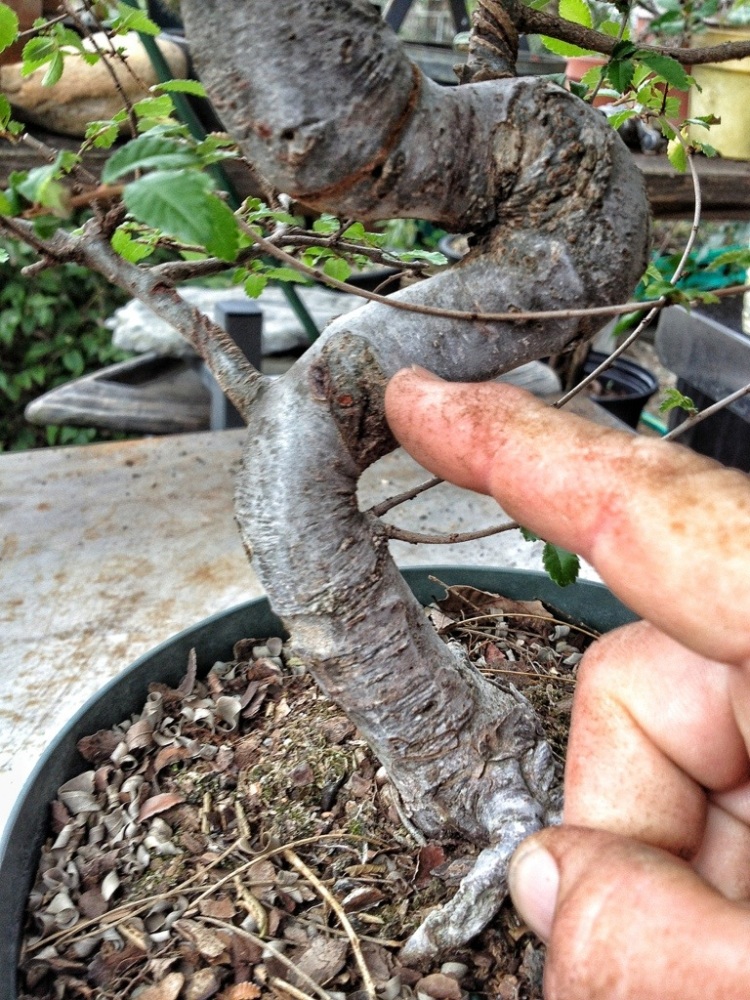

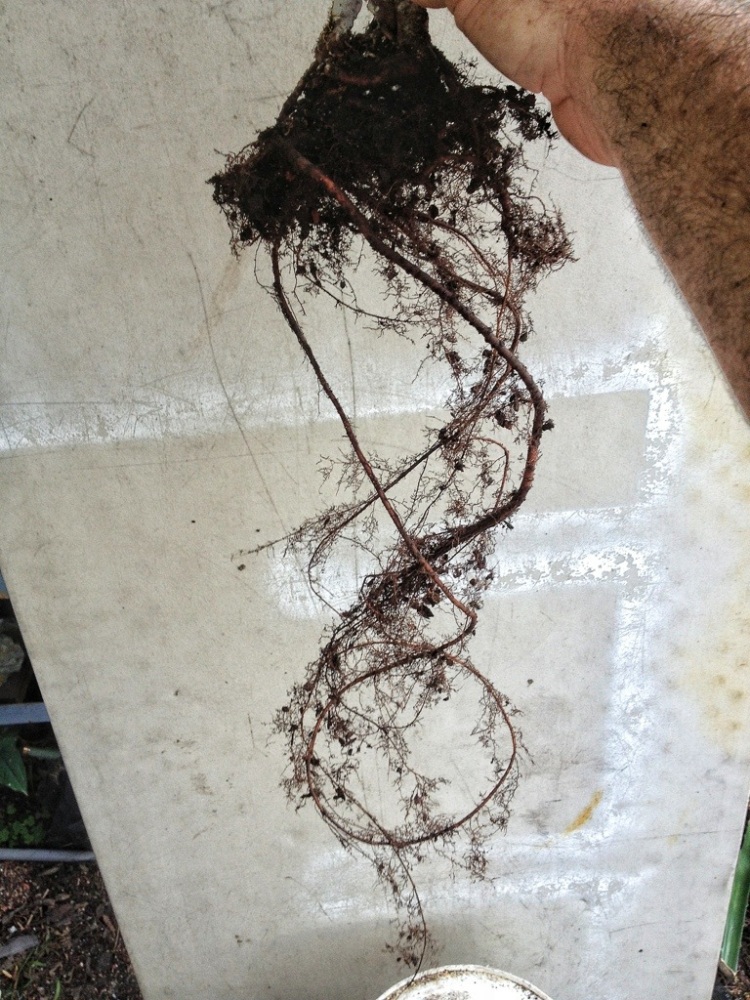
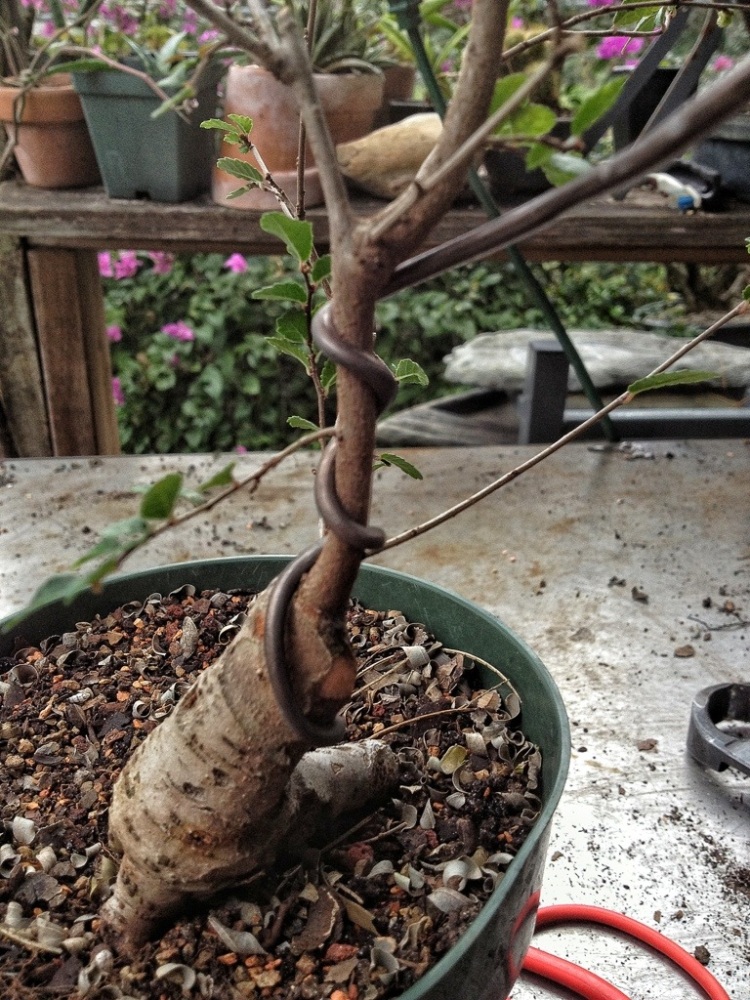
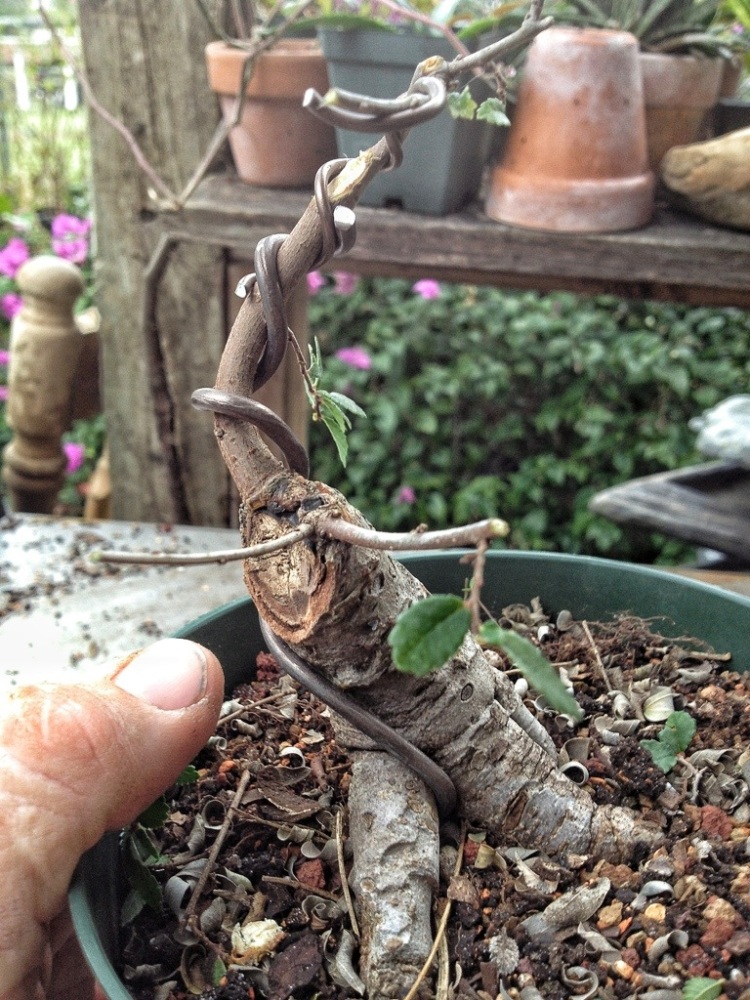

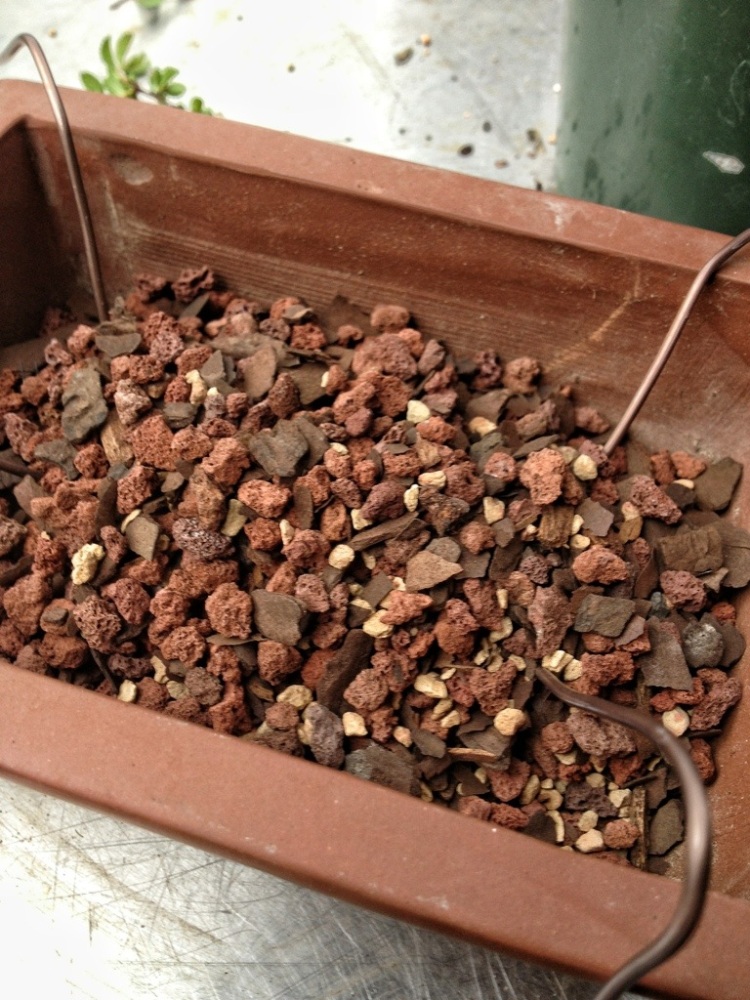

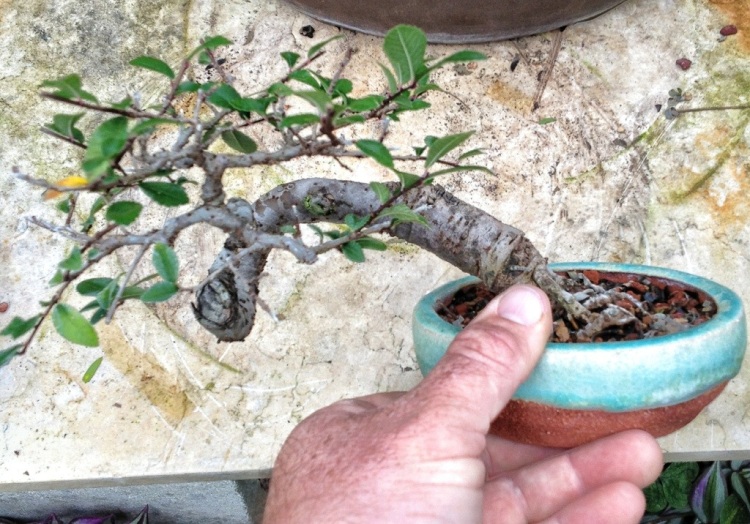


Nice “How to” Adam. Great pics and descriptions on how to take the typical S curve elm and turn it into, well, something you wouldn’t be ashamed to have anyone see sitting on your bench. Good job!
LikeLike
Thanks Troy
LikeLike
First I want to say I love the blog. I am new to bonsai and I feel like a kid on Christmas morning every time I see a new one. I have a few s curved fukien teas as well?
Thanks,
Jason
LikeLike
Sorry kids were getting into something. What I meant to say is will this method work for fukien teas as well?
LikeLike
Yes it will work on the Fukien too
LikeLike
As usual, another “grass roots” effort on your part – pun intended. I enjoy your blog and always seem to learn something. Thanks.
LikeLike
Nice post, Adam, it’s very instructive and gives us new ideas on how to re-evaluate those s-shaped japanese (or chinese) elms that are usually the first plants that beginner bonsai-lovers buy (and then keep in a corner when artistic competence demand for more sofisticated plants to be put into the collection). I think that it myght be possible to recover for bonsai purposes also the upper part of the plant by marcotting (layering? air-layering? sorry, I’m not sure of the englis term for what I want to say) instead of simply cutting it and throwing away.
cheers
Sergio
LikeLike
We use the term “air-layering” here in the US. And yes, definitely one could air layer it. It is very easy on an elm, I know from experience.
Thanks for reading (Wow, from Italy. You’re English is very good!)
LikeLike
Thanks Adam, I worked for long (now I’m retired) in an international Company, where English was the official language.
Ciao
LikeLike
I have a bunch of these S curve elms, ficus, and fukien teas that have just been sitting on the back benches because I’ve never been able to “see the tree” in them with their god-awful bends. I think after reading your post, I’m going to get a bunch of grow pots and have a chop session!
LikeLike